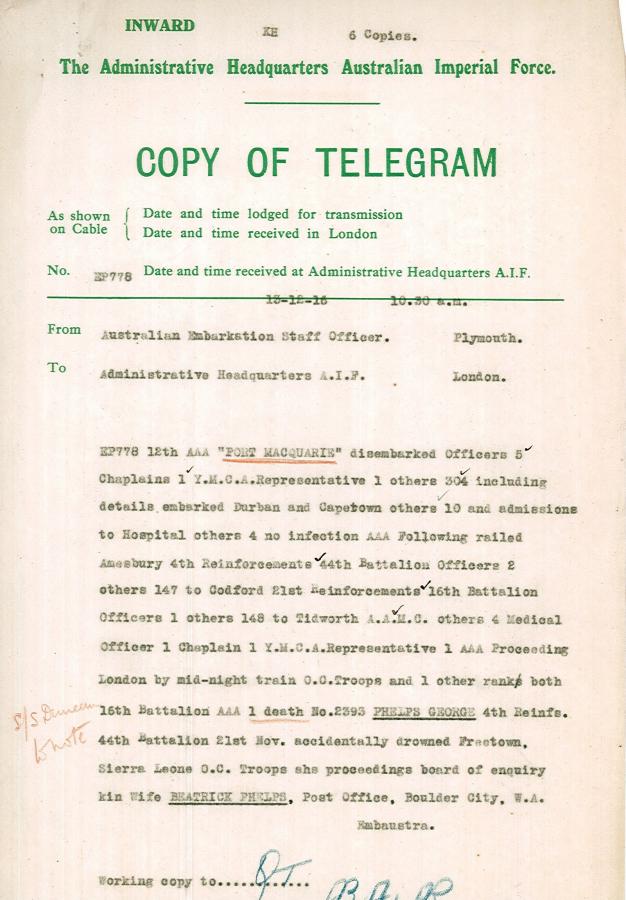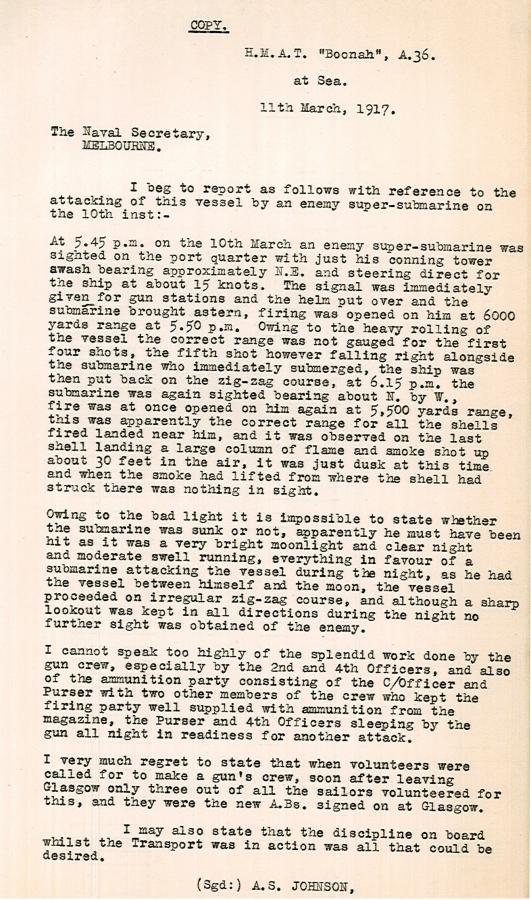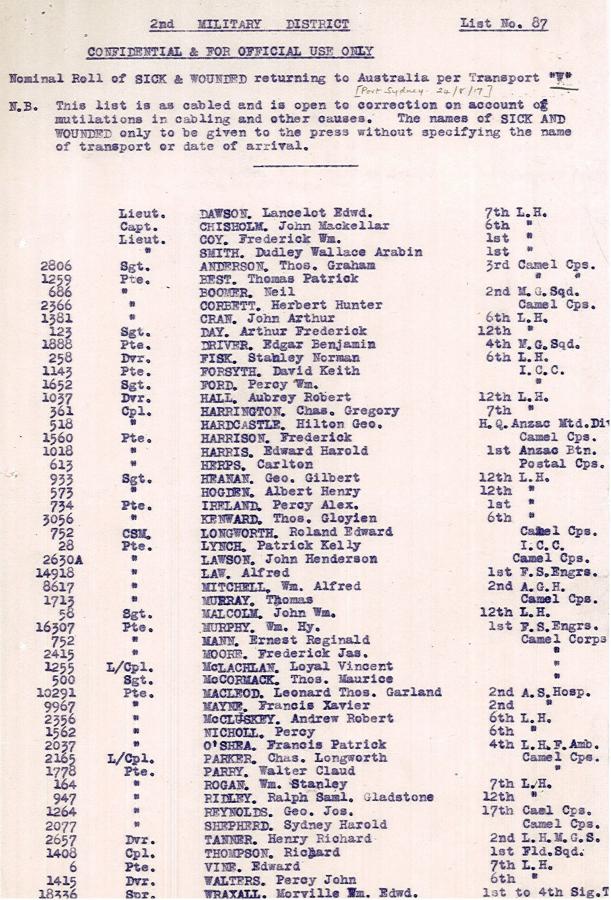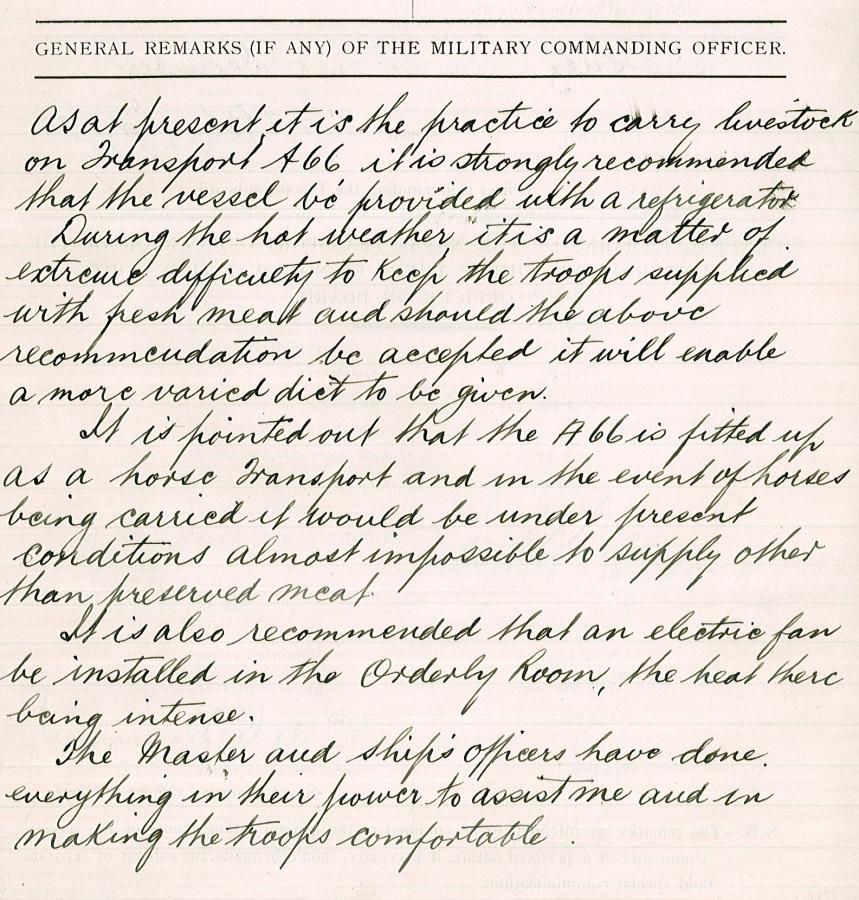Highlight on official records of the First World War: AWM7 - Troopship records, 1914-1918 War
Highlight on the official records of the First World War is a centenary program of posts highlighting those records created 100 years ago, why they exist and how we can help make these essential records available for research purposes.
Function and provenance
AWM7 records the logistic processes involved in transporting the AIF to Europe and back again, in the form of movement orders, war diaries, nominal rolls and telegrams.
The logistics of moving thousands of men and hundreds of tons of equipment half-way around the world are complicated. In 1914, the government inspected and chartered a total of 28 troopships to move the AIF to the Middle East, and Europe, as recounted in the official history:
There already lay in various ports a large fleet of troopships, numbered A1 to A28 (a system of numbering which the Australian transports retained throughout the war). A heavy price was due for every day’s hire of each ship, and any delay in sailing was not only most trying for the troops, who had said good-bye to their families and friends, but also highly expensive to the country.
– C E W Bean, The Story of ANZAC, p. 86
These 28 ships were to be supplemented as the war progressed, by merchant shipping either chartered or otherwise taken up from trade, until a total of 74 vessels were used by the Commonwealth during one stage of the war or another. Some, like Orvieto [A3] were only used for a brief period of time (released on 29 DEC 14) while others made many voyages between 1914 and 1920.

During the early period of the war, series items record the movement of men, horses and equipment to the battlefields. On these voyages complete units travelled together, and recorded notes on the voyage in their unit war diary - these records will usually be found in AWM4. A record of the voyage was also kept, which recorded the senior officer’s findings on the quality of the vessel during the voyage using form T.106 (Voyage Report), counter noted by the Captain of the vessel and/or the senior naval officer where one was present.

After the early war period, most troop movements by sea consisted of men and women from a mixture of formations and units – being sent overseas as reinforcement drafts or returning home on leave, usually prior to demobilisation. For the purposes of the voyage, a ‘draft’ unit was formed, commanded by the senior officer aboard, usually a Major. These units counted as ‘provisional’ units under Section 114 of Field Service Regulations Part II 1909 – and as such were required to maintain war diaries, which are typically enclosed within the voyage report.

The content of each war Diary varies. Some are very short records of the voyage, while others record a large amount of detail on daily events and the minutiae of shipboard life. Typically, the level of detail increases as the war goes on. In particular, the post-war reports are very detailed, containing numerous appendices. However, primarily, these records recount the logistics involved in assembling a draft of men and women, then shipping them many thousands of sea miles.

System of arrangement and control
The series covers voyages leaving Australia, and voyages returning to Australia. It is arranged alphabetically, by name of troopship. Within each series, separate files are kept regarding each voyage or area of interest. For example: Shropshire took part in seven voyages during her AIF commission and after the war as a chartered vessel. Each voyage is contained in a separate file within the series. Additionally, correspondence associated with the ship is filed in the series associated with that ship.
Content
Although each set of records within the series is different, they typically include:
- War Diaries
- references to passenger, hospital and horse sea transports
- reports, including:
- ships commanding officer
- doctors
- sports officer
- education officer
- chaplains,
- YMCA lists
- nominal rolls of passengers (officers and men; women and children; and detainees)
- Sick and wounded including nature of illness or disability
- correspondence regarding embarkation, ships staff and ship’s complement
- plans of the ship, including cabins and locations of lifeboats
- ship’s reports of attack and sinking by enemy submarines
- some pay records
Using the series
AWM7 is not digitised on the Australian War Memorial website. Each item in the series is recorded on the RecordSearch database, accessioned by ship’s name and diary number.